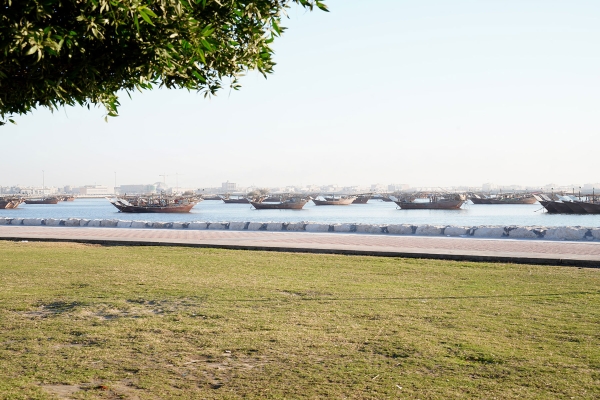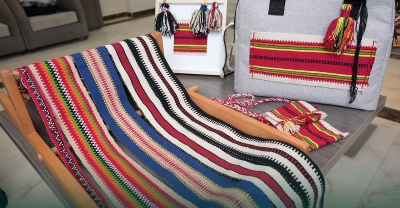
Al-Qallafah is the craft of traditional wooden shipbuilding in the Eastern Province of the Kingdom of Saudi Arabia. It is considered a part of the carpentry profession, and the skilled craftsman in this trade is called "al-Qallaf." The ships were made in small and medium sizes to suit sailing in the Arabian Gulf, and they were used by sailors for maritime transport, trade, and diving trips to harvest natural pearls.
History of al-Qallafah craft in the Arabian Gulf
The inhabitants of the Eastern Province, and the Arabian Gulf in general, have practiced the craft of al-Qallafah since ancient times. They relied on maritime routes to connect with other peoples, as land routes were difficult and arduous. This contributed to the flourishing of maritime navigation and, consequently, the development of traditional shipbuilding.
Al-Uqayr Port was one of the important ports in the Gulf, but its significance declined over time, and it was no longer equipped to accommodate new large ships. This led to the establishment of intermediate ports for this purpose. In 1951, the port was closed, and maritime activities, including passenger transport, trade, and pearl diving expeditions, as well as shipbuilding, ceased. External trade was redirected to neighboring ports, such as Bahrain's port, which experienced extensive commercial and economic activity.
One of the factors that contributed to the flourishing of al-Qallafah craft at that time was the nature of the Arabian Gulf's coastline. When the coast was adjacent to low-lying areas below sea level, seawater would overflow, forming marshes. The shallow waters in the western part of the Gulf prevented the establishment of ports in new inlets, as navigation was challenging, and large ships could not enter. Some coastal areas were only accessible by small boats and trading vessels. Additionally, the people of Safwa practiced fishing along their shores using small fishing boats, known as Kutiyyat, which were no more than four m in length.
Provinces practicing al-Qallafah craft
The coasts of the Arabian Gulf, including al-Jubayl and Darin, were important points in the maritime history of the eastern Arabian Peninsula. Darin Island, in particular, was known since ancient times for its bustling port, from which fishing and pearl-diving ships would depart. Darin was also recognized for traditional shipbuilding, with activities carried out along various coastal areas. However, its shipbuilding industry did not reach the scale seen in other Gulf regions, as it was primarily focused on meeting local demand and community needs.
Types of traditional ships
Local al-Qallafah craftsmen build various types of ships, with the largest used for travel and pearl diving and the smallest for fishing. Gulf shipbuilders generally agree on calling the construction of new ships 'Ushar', while repairs and restorations are referred to as ’Ashar'.
The Qallafs used various types of wood, including Indian teak (Tectona grandis), supplemented by some local woods in the ship's interior parts, such as Ziziphus spina-christi wood for certain components. During the peak of the natural pearl trade in the Arabian Gulf and the seasonal pearl-diving expeditions, local shipbuilding increased to meet the high demand. However, this industry declined and eventually diminished with the advent of cultured pearls around 1930.
Al-Qallafah craft in modern times
With the urban development witnessed in the country and the expansion of buildings and residential areas, most Qallafs shifted to carpentry, producing traditional doors and windows to meet growing local demand. Craftsmen began moving from city to city within the province, such as al-Qatif, Safwa, and al-Jubayl, due to the fluctuating nature of this craft and the impact of changing economic conditions on its stability. This need to secure a livelihood reflects the broader trend seen with many local professions and crafts in the past.
Related quizzes
Related articles


